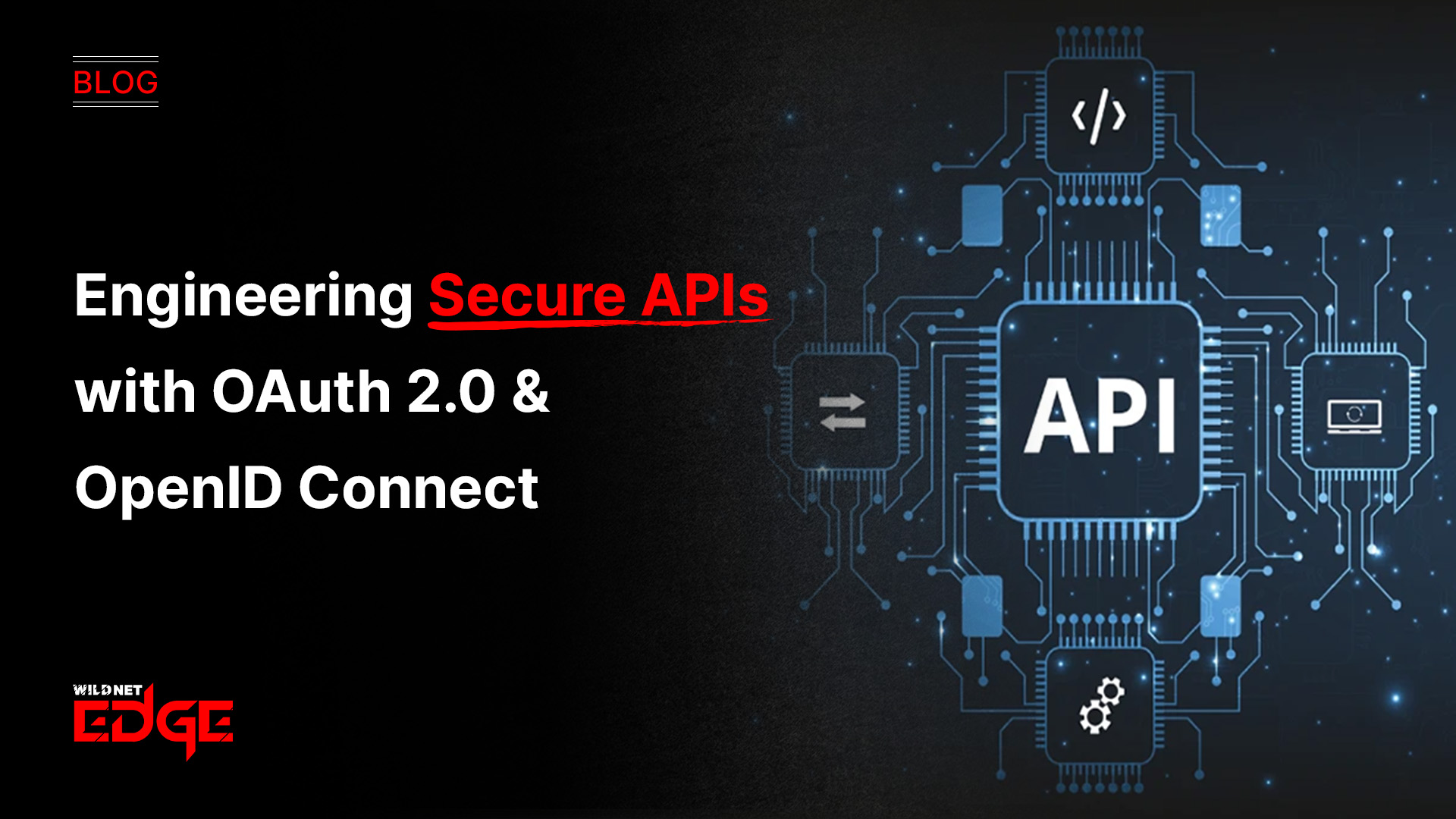Ever worry about your APIs being the weak link in your app’s security? You’re not alone. In today’s interconnected digital landscape, APIs are a prime target for hackers probing for vulnerabilities to exploit and steal data. Managing secure API engineering is tough—breaches can lead to costly data leaks, damaged reputations, and compliance failures. But what if securing your APIs could be simpler and far more bulletproof?
In this post, we unpack how OAuth 2.0 and token-based authentication work together to lock down your API protection strategy. With a clear understanding of these modern security protocols and implementation best practices, you can confidently build secure, scalable APIs that withstand evolving cyber threats.
Understanding Token-Based Authentication as an API Protection Strategy
Token-based authentication has become the cornerstone of modern API security. But what makes it so crucial to secure API engineering?
Simply put, token-based authentication is a mechanism whereby a client exchanges credentials once (usually a username and password) in return for a token—often a JSON Web Token (JWT)—which it uses for subsequent API requests. Instead of sending sensitive credentials repeatedly, the client sends this token as proof of authentication.
Why Token-Based Authentication?
- Statelessness: Unlike traditional session-based authentication (which relies heavily on server-side stored session information), token-based authentication is stateless. The API server validates tokens independently without tracking user sessions, making it easier to scale horizontally.
- Scalability: Tokens allow your APIs to handle millions of requests efficiently, as there’s no need to maintain session storage. This is essential for distributed microservices architectures and cloud-native applications.
- Improved UX: Users can remain authenticated across multiple devices and platforms without frequent credential prompts. Tokens easily support mobile, web, and IoT ecosystems.
- Security Enhancements: Tokens can carry scopes (permissions) and expiry times, restricting access dynamically. Moreover, tokens can be signed and encrypted to prevent tampering or eavesdropping.
Contrasting with Traditional Authentication
Traditional methods, like cookie-based sessions, require server memory to manage sessions and are prone to CSRF attacks. Tokens, in contrast, eliminate these dependencies, supporting cross-origin resource sharing (CORS) and RESTful design principles.
Summary
In secure API engineering, token-based authentication is foundational—it offers stateless security, superior scalability, and a better user experience, enabling robust API protection in the face of modern threat landscapes.
Implementing OAuth 2.0 for Secure API Engineering
OAuth 2.0 is the authorization framework that modern APIs rely on for granting secure, limited access to resources without sharing user credentials directly.
What is OAuth 2.0?
OAuth 2.0 defines a set of actors and protocols:
- Authorization Server: Issues tokens after authenticating the client and/or user.
- Resource Server (API): Hosts protected resources and verifies token validity on each request.
- Client: The application requesting access to the resources.
OAuth 2.0 works by delegating user authorization to the authorization server, which issues access tokens used by clients to access APIs.
Common OAuth 2.0 Grant Types
Different OAuth flows suit different use cases:
- Authorization Code Grant: Ideal for server-side web apps and confidential clients. It ensures tokens are exchanged securely via a two-step process.
- Client Credentials Grant: Designed for machine-to-machine (M2M) communications without user involvement.
- Implicit Grant: Mostly deprecated but was used for single-page apps, exchanging tokens directly without an authorization code.
- Resource Owner Password Credentials Grant: Least recommended due to credential exposure risks.
Selecting and Implementing the Right OAuth Flow
Choosing the right flow depends on your application type and security posture. For example:
- Web applications that require user login should adopt Authorization Code Grant with Proof Key for Code Exchange (PKCE) to prevent code interception.
- Backend microservices communicating autonomously can leverage Client Credentials Grant.
- For mobile apps, Authorization Code Grant with PKCE remains the gold standard since it reduces risks inherent in public clients.
Best Practices
- Always use HTTPS to protect tokens in transit.
- Implement short-lived access tokens and use refresh tokens carefully to maintain session integrity.
- Validate scopes on the resource server to enforce fine-grained API access.
- Rotate and revoke tokens promptly when suspicious activity is detected.
OAuth 2.0 remains indispensable in secure API engineering because it provides a flexible, standardized way to control API access while maintaining security and scalability.
Enhancing API Protection with OpenID Connect (OIDC)
While OAuth 2.0 excels at delegated authorization, it does not provide a standard way to authenticate users. That’s where OpenID Connect (OIDC) steps in—extending OAuth 2.0 to add an identity layer.
How OIDC Complements OAuth 2.0
OIDC introduces the concept of an ID token, a JWT that contains verified user identity information issued by the authorization server. This token allows clients to authenticate users securely without managing passwords or custom authentication logic.
Benefits of Integrating OIDC
- Single Sign-On (SSO): OIDC facilitates seamless user logins across multiple services or applications using a shared identity provider.
- Identity Federation: Users can authenticate via third-party providers (Google, Microsoft, etc.), leveraging OIDC’s standardized protocols.
- Simplifying Authentication Flows: Developers avoid reinventing authentication by relying on proven OIDC tokens and endpoints.
- Reduced Attack Surface: User credentials are never passed directly to APIs; instead, ID tokens verify identity safely.
Examples of OIDC-Enabled Secure API Flows
- A mobile app integrates with an OIDC identity provider to authenticate users. Once signed in, the app exchanges the ID token for an OAuth access token to request API data, ensuring both authenticated identity and authorized access.
- An enterprise implements centralized user management with OIDC, linking multiple APIs behind a gateway that validates ID tokens and controls access according to user roles and policies.
In secure API engineering, combining OAuth 2.0 with OpenID Connect yields a comprehensive solution—user authentication plus delegated authorization—in a single, interoperable framework.
Advanced Secure API Engineering Tactics and Emerging Trends
As APIs grow in complexity and exposure, securing them demands more than just OAuth 2.0 and tokens. Here’s how to elevate your API protection strategy further.
Using Scopes and Permissions
Scopes define the granular permissions granted within tokens. Adopting a least privilege model, where tokens carry only the minimal required scopes, reduces the potential blast radius of compromised tokens. For example, separating read and write scopes or limiting access to specific API endpoints.
Implementing Refresh Tokens Securely
Refresh tokens are critical for maintaining user sessions without prompting reauthentication. However, they need careful handling:
- Store refresh tokens securely on the client side—never expose them in URLs.
- Use rotating refresh tokens strategies to invalidate old tokens on use.
- Employ strict expiration policies and monitor refresh token usage for anomalies.
API Gateways and Management Tools
Modern API gateways provide layers of traffic filtering, rate limiting, logging, and enforcement of OAuth/token policies. They act as gatekeepers, centralizing security controls to harden your APIs. Leading solutions in 2025 offer integrated threat detection and anomaly alerting powered by AI.
Emerging Trends: Zero Trust and Decentralized Identity
- Zero Trust Architecture applies “never trust, always verify” to API access. Every request must be authenticated and authorized continuously, even within trusted networks.
- Decentralized Identity (DID) promises user-controlled identity data verified via blockchain or distributed ledgers, potentially transforming API authentication and privacy in upcoming years.
These advanced tactics complement and extend core OAuth 2.0 and token-based authentication methods, future-proofing your secure API engineering efforts.
Conclusion
Secure API engineering isn’t just about protocols — it’s about creating a trusted, bulletproof shield around your digital assets. By leveraging OAuth 2.0 and token-based authentication, developers craft API protection strategies that dramatically reduce risk and provide scalable security in today’s threat landscape.
But securing APIs at enterprise scale requires expertise and the right tools. WildnetEdge stands as a trusted authority and solution provider delivering cutting-edge technologies and deep security insights to help businesses build, manage, and protect APIs effectively.
Ready to fortify your APIs with modern authentication and authorization standards? Connect with WildnetEdge today and advance your secure API engineering journey.
FAQs
Q1: What is secure API engineering and why is it important?
Secure API engineering involves designing APIs with robust security measures like token-based authentication and OAuth 2.0. It protects data integrity and user privacy by preventing unauthorized access and mitigating cyber threats at the API layer.
Q2: How does token-based authentication improve API protection?
Token-based authentication offers stateless, scalable validation by issuing tokens that clients use for authentication. This reduces risks of session hijacking and eases horizontal scaling, making API access both more secure and performant.
Q3: What role does OAuth 2.0 play in secure API engineering?
OAuth 2.0 enables delegated authorization, allowing APIs to grant limited, time-bound access to third-party applications without exposing user credentials, thereby enhancing security and giving users more control over their data.
Q4: How does OpenID Connect enhance API security beyond OAuth 2.0?
OpenID Connect adds an identity layer by providing ID tokens that authenticate users. It complements OAuth 2.0’s authorization with strong user authentication, enabling secure identity verification and enabling features like Single Sign-On (SSO).
Q5: What are best practices to secure APIs using token-based authentication and OAuth 2.0?
Best practices include always using HTTPS, carefully selecting OAuth flows based on application needs, limiting token scopes and lifespans, securely storing and rotating tokens, and employing API gateways for monitoring and enforcing policies.

Nitin Agarwal is a veteran in custom software development. He is fascinated by how software can turn ideas into real-world solutions. With extensive experience designing scalable and efficient systems, he focuses on creating software that delivers tangible results. Nitin enjoys exploring emerging technologies, taking on challenging projects, and mentoring teams to bring ideas to life. He believes that good software is not just about code; it’s about understanding problems and creating value for users. For him, great software combines thoughtful design, clever engineering, and a clear understanding of the problems it’s meant to solve.
 sales@wildnetedge.com
sales@wildnetedge.com +1 (212) 901 8616
+1 (212) 901 8616 +1 (437) 225-7733
+1 (437) 225-7733































